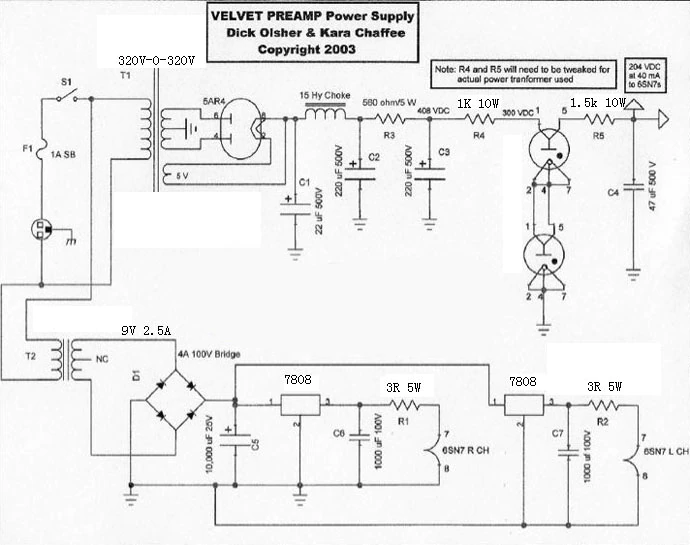A Chinese Blue Velvet Preamplifier
Tip #98
Dick Olsher (January 2023: Addendum added on 2/27/2023)

The original Blue Velvet design was published as a DIY project on the Enjoythemsuic.com website in November 2003. Apparently, a Chinese copy, or more accurately a version of the Blue Velvet DIY preamp, has been around since at least 2018, as I discovered while surfing AliExpress about a year ago. I’m not really upset about the implied copyright violation and actually welcome commercialization of the design at this time.
Of course, I was intrigued in view of its modest $200 asking price and decided to purchase a unit for evaluation. I opted for the aluminum chassis, though I wasn’t thrilled with its single RCA input as far as convenience, but on the plus side, this is a purist approach that eliminates the input selector from the signal path.


The unit ships with a 5Z4P rectifier tube, which is a copy of a Russian 5U4 type, and a pair of Shuguang 6N8P dual triodes based on the Russian 6H8C. After an initial audition, I decided to ditch the 6N8P triodes; they sounded way too coarse for my taste. I reached into my stash of 6SN7 tubes and experimented a bit before settling on a vintage 1950's GE 6SN7GTA that seemed to max out the textural sweetness this puppy is capable of. I also rolled in a number of different rectifier tubes (5AR4 and 5U4G) before settling on a Tube Amp Doctor selected 5AR4.
The layout is neat and logical. The main audio circuit is laid out on a 1.6mm thick, double-sided, printed circuit board. Parts quality is fine with the obvious exception of the coupling capacitors.
Its most endearing sonic characteristic is a pervasive midrange sweetness, let’s call it a coloration, as this Blue Velvet sounds a tad sweeter than the real thing. But it turned out to be an addictive trait that drew me consistently into the music and glorified female voice as well as violin overtones.
After an extended audition, it became apparent that the Chinese Blue Velvet very likely paid a price at the frequency extremes for its use of cheap caps. Bass impact and treble purity are diminished. And relative to the original, soundstage transparency and image focus are also a tad diminished. Still, at its asking price it represents a remarkable value. So you know, I’ve become quite enamored of its overall musicality and have added it to my cadre of preamps as it works well with both solid-stage and tube power amps.
ADDENDUM (2/27/2023)
I had noticed that both channels of my BV were missing the 4900pF polystyrene cap that is specified as a parallel bypass for the 0.68uF output coupling cap. Perhaps an oversight? So after some procrastination, I finally got around to doing something about it.
I happened to have a pair of 0.1uF/600V V-Cap CuTF caps on hand. Yes. I know,they're super expensive costing as much as the entire preamp, but I was curious to find out what would happen if I popped them into the circuit to bypass the output coupling caps.
The end result was a dramatic improvement across the board, in particular with regard to soundstage transparency and treble purity. It was hard to believe that this V-Cap bypass was responsible for such a startling sonic improvement. This turned out to be a game changer, catapaulting this BV to the head of the class in terms of sweet and refined harmonic textures. It is now one of my favorites and shall remain firmly entrenched in Listening Room #1, accompanied by the PAOLI 60M monoblocks and the MoFi Electronics SourcePoint10 loudpeakers.